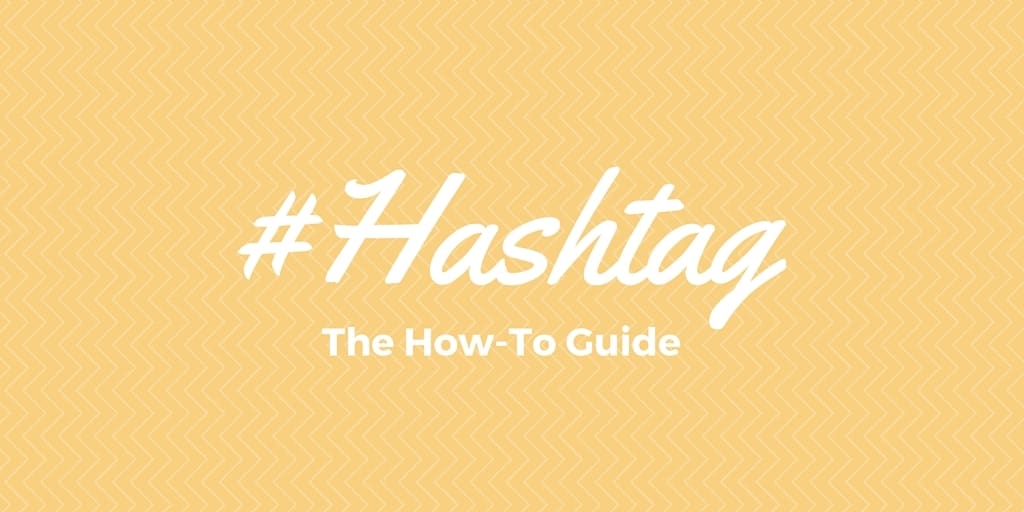Hashtags have become a prominent part of our daily lives — whether we see them on social media or hear somebody jokingly exclaim “hashtag blessed” when something good happens to them.
The fact of the matter is that hashtags are here to stay.
These promotional and organizational mechanisms can do so much more than tag a photo and optimize its searchability. Hashtags can boost the exposure of branding and campaigning efforts. They can be helpful assets to employ when showcasing products or broadcasting events. And, most of all, they can be used to align with a specific lifestyle or show what’s currently in trend.
The problem, though, lies in using hashtags effectively. When is it appropriate to use them? How many hashtags is too many? And what elements should a hashtag include?
When to Use #Hashtags
Hashtags should be used to create a streamlined, cohesive message about your brand. They should also have a purpose when it comes to engaging in social conversations. Not only should hashtags flow with what you’re trying to say, but they should also be pertinent to current conversations within the “social stratosphere.”
When tagging content for events, for example, use a hashtag that readers will recognize as connected to the event and that all individuals at the event can use in their social media posts. The Young Adult Literature Festival, nicknamed YALL Fest, came to Charleston in 2016 and used the hashtag #YALLFest2016. For individuals who were attending, this hashtag facilitated interaction on another level.
When promoting products or contests, it is also important to find a relevant hashtag that correlates with everything being pushed. Sephora uses #ProTip when talking on Twitter about makeup or beauty advice specifically related to its products, and the brand NARS uses #NARSissist to tag most of its content. These companies have developed these standard hashtags for use in the majority of their content because the tags showcase not only the brands, but also the images the brands have established for themselves. In another example, Dunkin’ Donuts used the hashtag #Dab4Dunkin to promote its recent Super Bowl 50 contest, and contest participants tagged all their content with it.
Overall, the message is clear that one must be strategic when using hashtags. It is important to confirm that the tags being used are accomplishing goals of the brand, otherwise the brand risks having irrelevant and (unfortunately) obnoxious hashtags. Is the chosen hashtag representing the company? Is it promoting an event or product? Is it trending or relevant as a whole?
How Many #Hashtags to Use
The “acceptable” number of hashtags you can include in a post differs based on the social media platform you’re using. For Twitter, one or two is normal. For Facebook, YouTube, Pinterest, Vine and Tumblr, the acceptable number of hashtags is one to five. For Instagram, nine to eleven are acceptable.
However, that doesn’t mean you must use the acceptable number each time — the appropriate number to use can be case dependent. But before you go wild with that little “pound” symbol, do remember that oftentimes with social media, the simpler the better.
Words to Use in #Hashtags
At their core, proprietary hashtags should be relevant to the message of your content. They should be short, snappy and cohesive with the overall messaging you are trying to convey. But exactly what words should you use to make a hashtag effective?
It’s important to choose something that is memorable and also fitting with trends. Dunkin’ Donuts’ #Dab4Dunkin hashtag paired the brand with a popular dance move. Cohesive, snappy, memorable — done.
Other brands choose to use their company name in hashtags to further tag their branded content. Target does this regularly on its Twitter page.
To help users generate and employ relevant hashtags, Twitter tailors trends for individual users and shows them associated hashtags. To do this, Twitter monitors current events and what social-media influencers are talking about most often.
The trends are always changing, though, so it’s important to keep hashtags current in order for them to be truly effective.
Keep in mind that the world of hashtagging is large and ever-changing. While we mainly discussed proprietary hashtags in this blog post, there is an art to utilizing established hashtags to join conversations and make your content more relevant. But that, my friends, is a separate conversation entirely (… and another blog topic for down the road). Happy #hashtagging!
